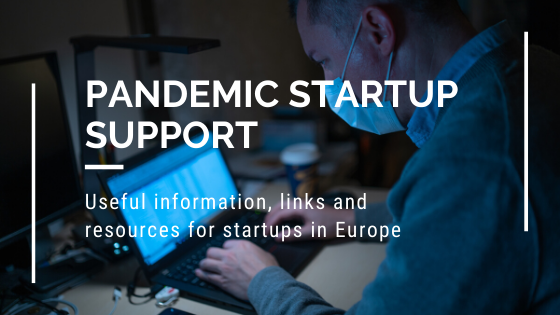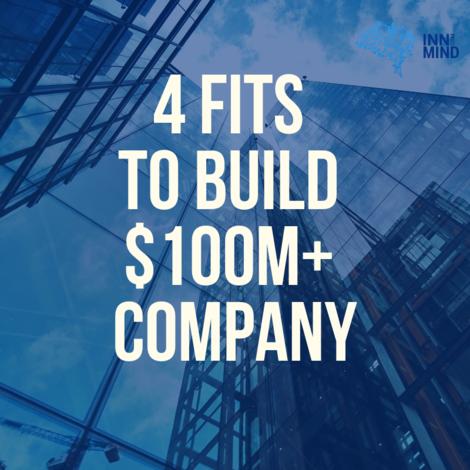If you are good at business theory you would begin to build a company with a great product. But this process will lead you to Product Death Cycle.

Just think, there are plenty of ideal products that never reach $100M+. Building a great product is just a piece of the puzzle.
Many experts also say that product-market fit is the only thing that you need and they are wrong. Yes, many startups fail due to lack of this fit but it is just a piece of the puzzle too.
Maybe you would think that your company needs growth hacking. While the term was created with good intentions, it has morphed into a concept around hacktics - that there is a tip, trick, secret, or tool that is going to unlock growth in your business. The problem with hacktics are that they are short-lived and never sustainable.
Every week, we curate a special web3 digest packed with useful tools an events, market insights, and exclusive opportunities tailored for founders and investors like you. Take a moment to subscribe to our weekly web3 digest.
So, how to get great success and fast growth in business?
Brian Balfour, founder of Reforge, previously VP Growth at HubSpot, considers that companies can reach $100M+ if they have these features:

Here are some rules of this puzzle:
- Each of these fits influences each other, so you can’t think about them in isolation.
- The fits are always evolving/changing/breaking. When that happens, you can’t simply change one element, you have to revisit and potentially change them all.
So, in this post, we share knowledge about each fit and how they work together based on Brian Balfour’s frameworks.
Market Product fit
Brian Balfour uses the term “Market Product Fit” instead of usual “Product Market Fit”. He explains that you should find out a problem and then build a solution.
Based on HubSpot case, Brian Balfour recommends companies starting with defining market hypothesis using Category, Who, Problems, Motivations:
- Category. What category of products does the customer put you in?
- Who. Who is the target audience within the category? There are always multiple personas within a single category, so this breaks it down further.
- Problems. What problems does your target audience have related to the category?
- Motivations. What are the motivations behind those problems? Why are those problems important to your target audience?
After problem and market definition you should think about the product: define product hypothesis using Core Value Prop, Hook, Time To Value, Stickiness:
- Core Value Prop. What was the core value prop of the product? How did it tie to the core problem?
- Hook. How could the core value prop be expressed in the simplest terms?
- Time To Value. How quickly could we get the target audience to experience value.
- Stickiness. How and why will customers stick around? What are the natural retention mechanisms of the product?
Based on these hypotheses a new product has appeared in HubSpot. The product was extremely simple. It consisted of a Chrome extension that, with a click of a checkbox, let you track your emails and get instant notifications on who opened and clicked on your emails.
And it is not the end. Brian Balfour tells that search for Market Product Fit happens over many cycles of iteration. Companies begin with the problem (market), build a solution (product) and then companies should look at who gets value from the product and redefine the market and product again.

Cyclical search for Market Product Fit helps you to discover new target markets. Ultimately, you will have to do it because the market doesn’t sit still.
Ok, you did this cycle many times and redefined your product, so how do you know if you have Market Product Fit?
Brian Balfour says here that you don’t need to look at qualitative or quantitative measurements separately. You should combine qualitative and quantitative measurements with your own intuition.
- For qualitative measurements, you can use Net Promoter Scope (NPS)
- Retention Curves and direct traffic can help you understand the quantity of your product. Direct traffic is the result of word of mouth. You can have less direct traffic but you should have some. These quantitative measurements can tell you if your business would grow without paid marketing or not.
- As for intuition, it is difficult to understand if you have a Market Product Fit. The point here is when you have strong Market Product Fit, it feels like the market is pulling you forward vs you pushing something to the market.
Product Channel Fit
One of the components of your company success is Product Channel Fit. And here as usual Brian Balfour destroys business myths.
The product should be created for the channel
That’s like that because you don’t create rules for the channel. You don’t command Facebook what content users should see, you don’t tell Google what links to put in the results of the search, etc. You cannot change the channel but you can change the product to promote it successfully through this channel.
Those are some general elements of products that fit different categories of channels:
Virality. For virality to be a high ceiling channel, a product at a minimum needs
- Quick Time To Value. Virality thrives when the viral cycles are short.
- Broad Value Proposition. Value proposition of the product needs to be applicable to a large percentage of a user's network (branching factor).
- Network Makes Product Better. Ideally, the product value increases the more of your network is on it.
Paid Marketing. To have Product Channel fit with paid marketing:
- Quick Time To Value. Users have less patience to find value when coming from an ad.
- Medium to Broad Value Proposition. Value proposition needs to be fairly broad due to targeting constraints of ad channels.
- Transactional Model. Product is built to extract transactional value to fund paid marketing.
UGC SEO. To have Product Channel fit with UGC SEO:
- UGC. Product needs to enable users to create millions of pieces of unique content.
- Motivation to Contribute. Product needs to have the core motivation to contribute content.
According to Brian Balfour, product promotion on a few different channels is bad for your business. A company that has Product Channel fit gets 70%+ of their growth from one channel. To choose the main channel Brian Balfour recommends trying 1 or 2 channels at the same time.
Of course, you can reach the Product Channel fit for all channels. There are such companies, but they are rare. LinkedIn is an example of a company that achieved Product Channel fit with multiple channels.
You should also consider that some old channels will die and new ones will appear. Here, many startups make a mistake: they copy their product from other channels to a new channel without product channel fit.
You can learn more about product channel fit here.
Channel Model Fit
Here is the next statement:
Channels are determined by model.
What is the model? There are two elements of the model:
- How You Charge - For example, free (monetized with ads), freemium, transactional, free trial, one year up front, etc.
- Average Annual Revenue Per User (ARPU) - What is the average $$ you make from a customer/user per year.
To help you understand why channels are determined with the model, Brian Balfour draws a line, Customer Acquisition Cost (CAC) spectrum. CAC is the cost of clients attraction. On the left side, there are companies with low ARPU, here cheap channels are available (virality, SEO, paid marketing). And on the right side, there are companies with high ARPU, where expensive channels are available (content marketing, inbound/inside sales, enterprises sales).

Between the left and right sides, there is a danger zone. Here, companies don’t have Channel Model Fit and have a much higher failure rate.

There are two reasons why startups can get into the zone:
- Too Much Friction For Low CAC Channels
Low CAC channels require products with low price to get less time on making the decision about the purchase. So, if you click on the ad of an interesting product and find that it costs too much for you, you will be disappointed and won’t buy this product. The higher price, the less effective low channels are. - ARPU Doesn't Support Higher CAC Channels
The company has low ARPU and use expensive channels. This way you can waste your marketing budget.
A business can exist in danger zone. If you are here it means that you use too few channels. It’s better to have few products for a few channels like LinkedIn:

We can see that LinkedIn has different products and promote them through different channels. On the left side where ARPU is low, we see LinkedIn as a social network and Premium Jobs service. These products are free or cheap which lets clients to determine their value faster. Therefore, they use low CAC channels: virality, SEO, paid marketing.
On the right side where ARPU is high, there are products Talent Solutions and Sales Solutions. The price of these products is high so, people that have just seen the ad of Sales Solutions at first don’t buy it and this product useless. So, here you need to prepare potential clients and spend more money on their attraction.
So, you can understand that even if you just change the price you should determine Channel Model fit once again.
Ok, we have 4 fits, what’s next?
Please, answer my question: at your current annual average revenue per user or customer (ARPU) is your target market big enough to get feasibly to a $100M+per year business?
No? Then you need to increase your target market. You can do it, by determining who in reality is using your product and getting value from it. HubSpot acted this way to increase the amount of clients up to one million!
You can learn about HubSpot case here.
You can also use InnMind as one of the promotion channels. There are blog, toolbox, messenger, etc. to spread the word about your company, share stories and experience, and get followers and clients.
In our database, there are almost 2000 experts who can help you develop your business and find the fit that you are missing.
Try premium subscription to use InnMind and improve your business!
Read also:





